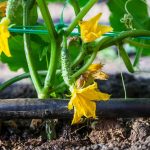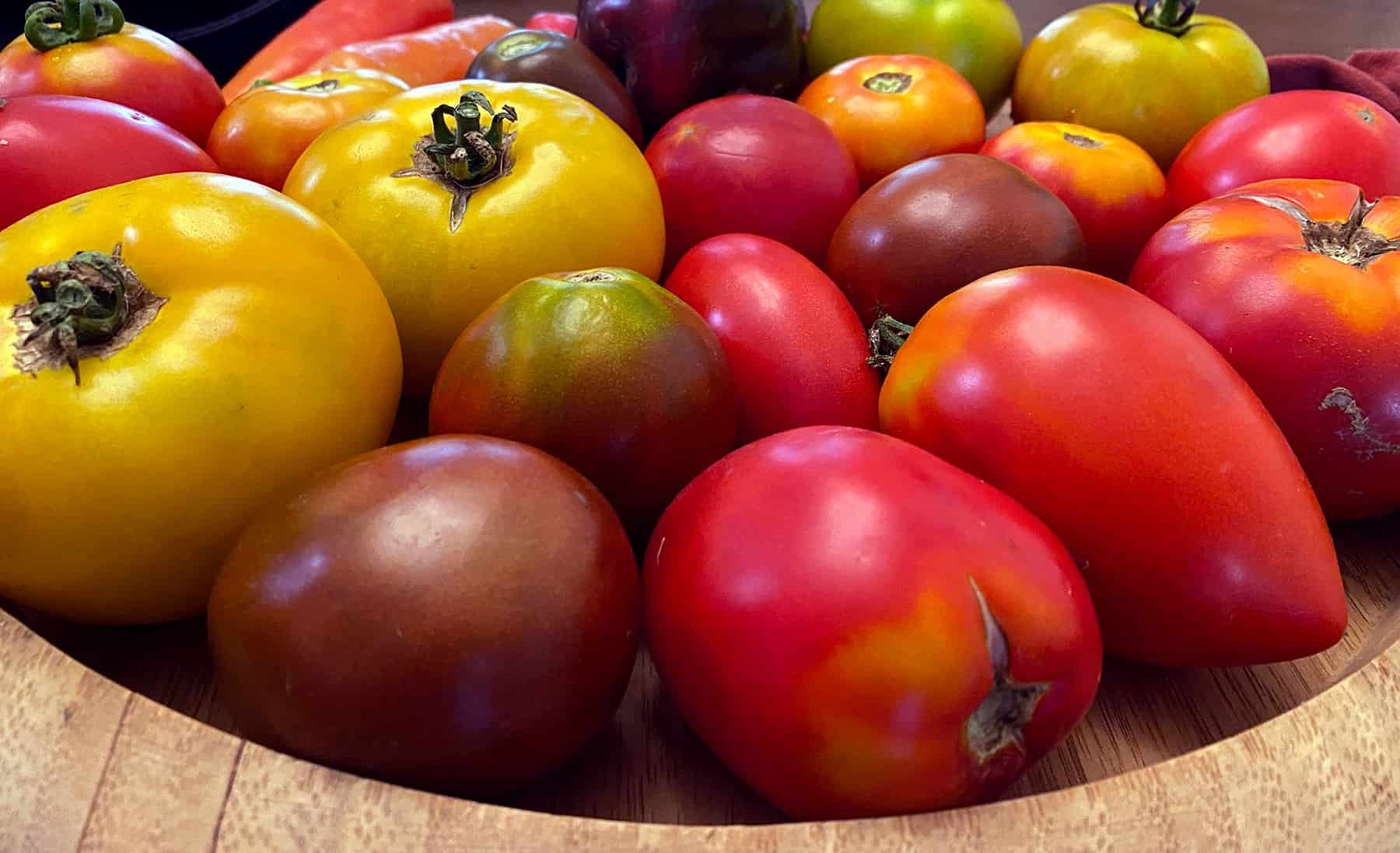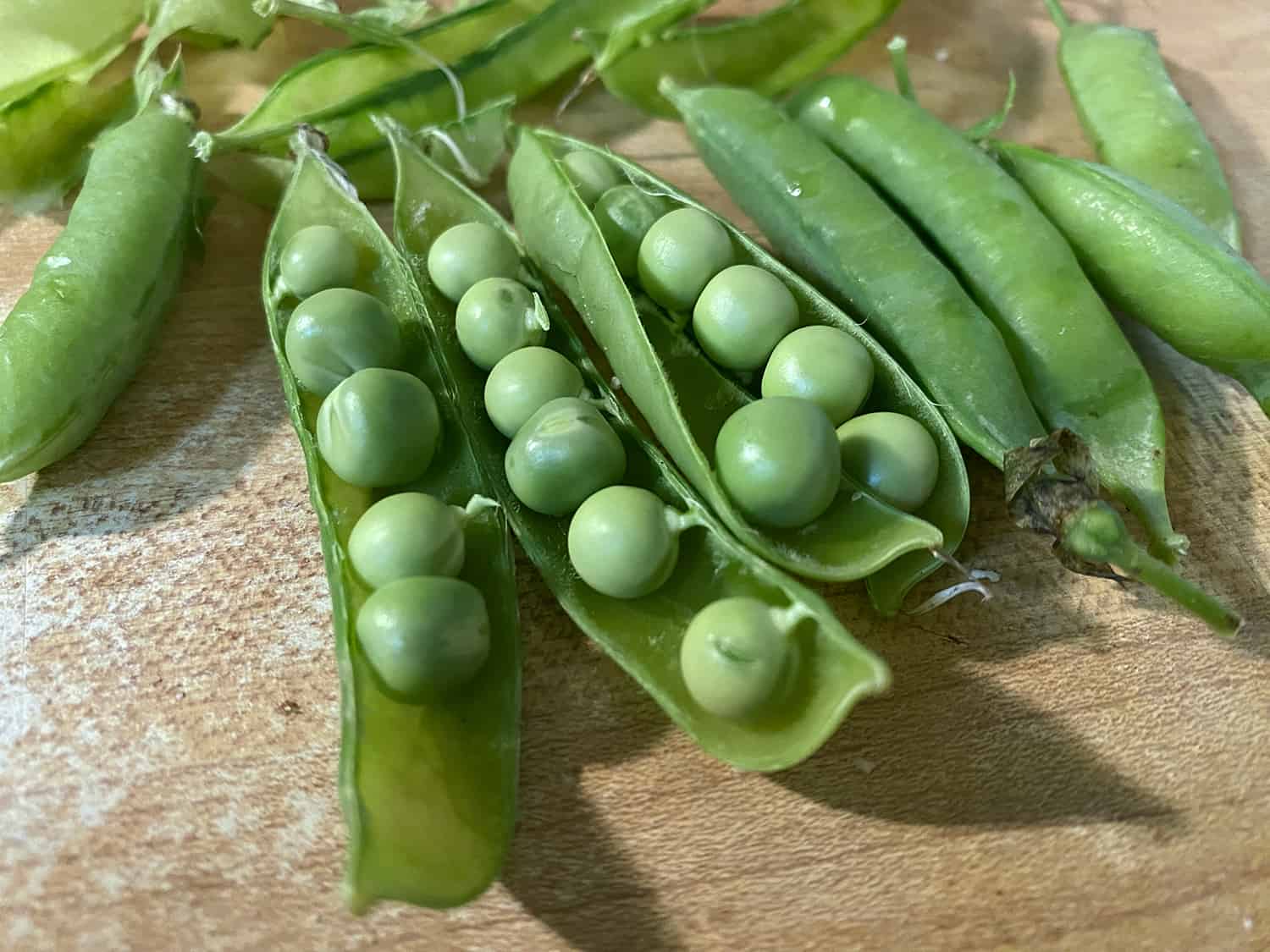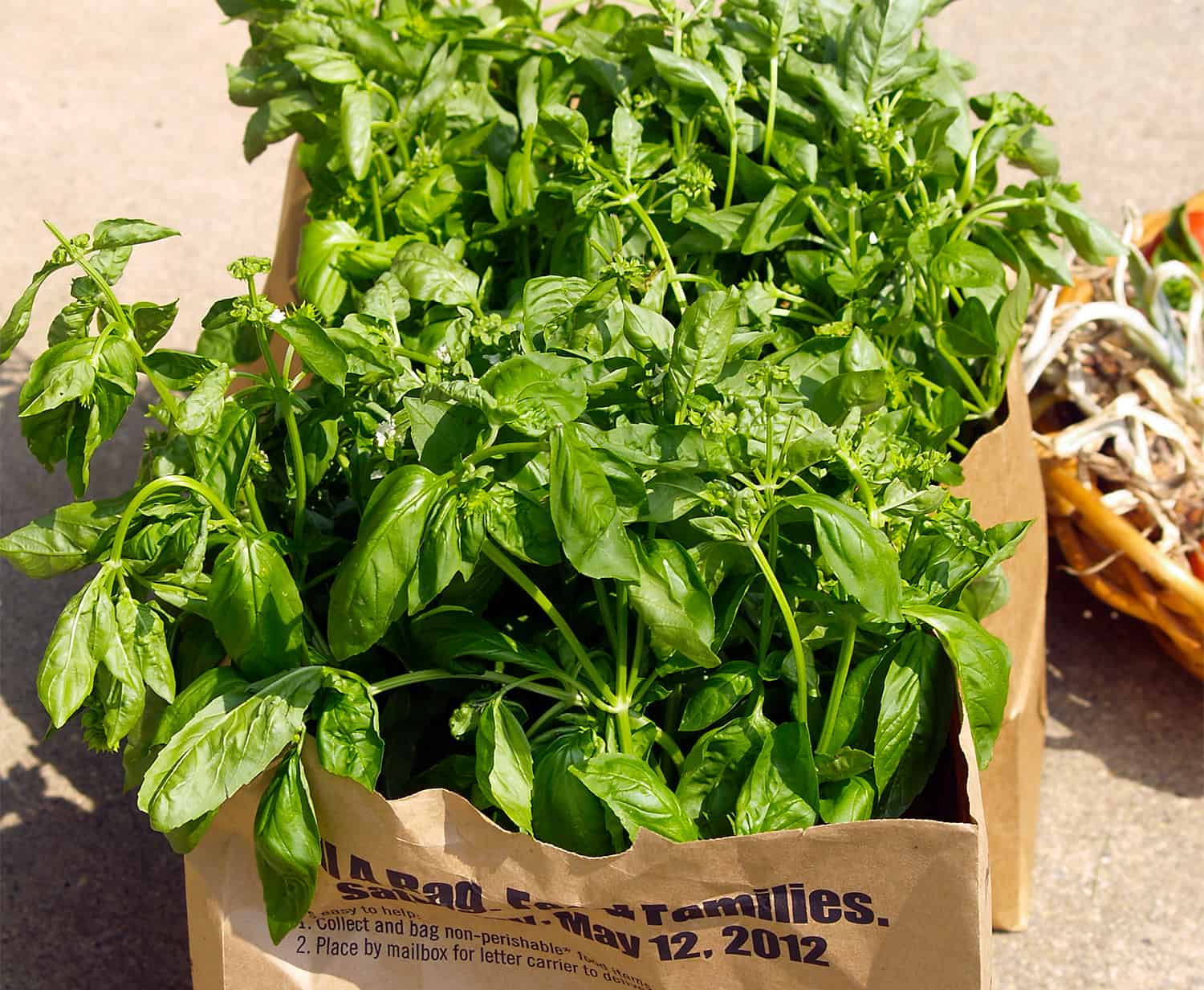[ad_1]
In case you have an natural backyard, you’re almost definitely rising tomatoes. Looks as if everybody does. It is a good factor, as tomatoes are filled with vitamin, can be utilized in a whole bunch of recipes, and are pretty straightforward to develop. Harvesting that first massive juicy tomato is a gold star sort of day.
Rising tomatoes is extremely rewarding. Besides when you’ve issues with climate, bugs, soil, or illness. Then they’re a extremely disappointing crop on your backyard.
These of us who’ve been rising tomatoes for many years have discovered from our errors (which will be many, as in my case). However now I’ve it all the way down to a science and might share these ten tomato-growing ideas with you that serve me properly every season. Naturally, one can’t management the climate, which may make a multitude of issues in a single day.
1. In case you have the room, begin your tomato crops from seeds indoors
Since I’ve been beginning my tomatoes from seed yearly, I’ve had fewer issues with pests and illness. There merely is an excessive amount of alternative for crops to select up insect pests, viruses, and fungal infections between the greenhouse, the shipper, and the nursery – particularly massive field retailer nurseries, which generally take horrible care of their crops. As soon as a plant is careworn by bugs, an absence of water, or an an infection, the plant could also be doomed. On the very least, it gained’t produce a bumper crop of tomatoes. Rising tomatoes from seed additionally lets you develop many superb heirloom tomatoes, most of which you’ll by no means discover at your native plant nurseries. Study beginning crops from seed.
2. While you plant your tomato, plant the stem sideways, not vertically
Tomatoes can develop roots wherever alongside their stems. Most individuals plant the tomato vertically, as much as its lowest leaves. The tomato will in all probability do high quality this fashion if climate situations cooperate all season. However if in case you have a drought, the plant could not be capable to attain sufficient water, and its roots could not present a big sufficient anchor to outlive a wind storm or unusually heavy rain. When planting the stem horizontally, the tomato grows a bigger root mass, giving it a greater probability of surviving droughts and wind.
Find out how to do it: Gently take away the entire bottom-most leaves on the stem, however go away these on the highest third of the plant. Dig a slender trench to a couple inches beneath the floor however vast sufficient to accommodate the basis ball. Lay the plant within the trench and gently bend the highest of the plant in order that solely the leaves are above the soil – you’ll bury the basis ball and the stem horizontally. You could have to regulate the ditch somewhat because the root ball is wider than the plant and have to be somewhat deeper. This causes the plant to be barely angled in the direction of the floor. Then, cowl the stem with the identical soil you simply eliminated.
The plant at first will look somewhat unusual buried as much as its neck like that, however in a couple of days the highest of the plant will flip in the direction of the solar and begin to develop vertically.
3. Website tomato crops the place they’ll get direct daylight all day
Earlier than you plant, make sure that your backyard mattress will get direct daylight from daybreak till late afternoon – it’s okay in the event that they’re in shade from 4 PM on – it might even save them throughout excessive warmth. By direct daylight, I imply daylight contacts the leaves – not ambient gentle. Tomatoes could produce in shadier areas, however to not the extent they’ll in direct daylight. Solar additionally helps to dry the leaves quicker after rainfall.
4. House tomato crops in response to their mature dimension
After I began rising tomatoes from seed, I had extra crops than I knew what to do with. So I squeezed an additional few into my raised backyard beds annually. At planting time, this was actually thrilling, figuring out I used to be going to have all of these tomatoes in July.
Nevertheless it was an enormous mistake. Over the season, an excessive amount of foliage was packed within the backyard mattress, which made for an excessive amount of dampness after rain. In consequence, illnesses like late blight took over and ended my tomato season early greater than as soon as. If you happen to dwell in an arid space, packing crops shut collectively could also be no downside, however when you’re in an space that receives average to heavy rain, this can be a unhealthy concept. All the time enable at the least 12 inches between crops and 14 inches if doable. Use containers for additional crops or give them away to a fellow gardener.
5. Companion crops shade tomato roots and help useful bugs
For years I’ve planted basil, parsley, dill, marigolds, and different herbs and flowers on the sunny aspect of my tomatoes. This not solely attracts pollinators but additionally shades the tomato plant roots from scorching solar and suppresses weeds. If the roots are shaded, it cuts down on the necessity for water and protects the plant from drought stress.
6. Tomatoes want a number of water
Watering tomatoes will be difficult – an excessive amount of they usually cease producing; too little they usually cease producing. Hitting the candy spot is essential.
If you happen to’ve planted your tomato as really useful above (horizontally), the roots ought to unfold sufficiently to take up water from a large space across the plant. This may undoubtedly assist. Be sure your crops obtain at the least one inch of water each week within the absence of rainfall. While you water, solely water across the root zone – you need to maintain the leaves as dry as doable to keep away from fungal infections.
Bear in mind – when you planted the tomato horizontally the basis zone is now fairly vast, so soak the soil round every plant sufficiently. And don’t skimp – tomatoes don’t thrive with “somewhat drink” day-after-day – this encourages shallow rooting. Soak them deeply as soon as per week, perhaps twice if it’s scorching or very dry, and that will likely be adequate. Mulching the mattress with straw or an identical mulch is useful to restrict evaporation and funky the roots. As a bonus, the mulch may additionally assist suppress soil-borne illnesses.
7. Tie tomato vines to a stake
A whole lot of gardeners swear by tomato cages however I’ve by no means understood this – the foliage is crammed in there and discovering the tomatoes at harvest appears troublesome. Plus, foliage packed tightly invitations illness.
I used tomato cages one yr and I by no means will once more. As an alternative, I exploit the old-school methodology of tying tomato vines to wooden steaks (not plastic). The only option is 7-foot cedar stakes. Since your stake will likely be 12-18″ beneath floor, you want 5-6 ft above floor to coach your vine. As soon as it reaches the highest of the stake, prune the highest of the plant off to maintain it from spilling excessive. This additionally permits the plant to focus its power on fruits and flowers already growing. Any fruit that begins after the plant is that this tall in all probability gained’t be prepared for harvest earlier than frost anyway.
You additionally need to management the extra stems that develop from the basis of indeterminate (vining) varieties, which will be as much as 4. Prepare the primary stem up the stake – if in case you have the room, use smaller stakes to help the extra stems to get the foliage off the bottom, or you’ll be able to prune them out completely. Your plant will nonetheless produce lots of tomatoes. Indeterminates (shrub varieties) don’t want staking.
8. Prune your tomato crops to forestall illness and improve fruit dimension
One of many keys to rising tomatoes is pruning indeterminates. Within the first few seasons that you simply’re getting the grasp of it, you could assume that you simply’re diminishing the energy of the plant or the harvest ultimately, however you aren’t. You’re focusing the power of the plant on rising bigger however fewer fruits and eradicating foliage which will contribute to illness.
After the tomato plant grows about two ft, begin pruning out the foliage closest to the bottom so the soil can dry rapidly. This discourages fungal illnesses on the leaves from soil-borne infections (many types of fungi dwell within the soil and splash onto leaves throughout watering or rain). Relying on the range, it might additionally develop extra stems from the basis. In case you have the room, you’ll be able to enable these to develop, however I sometimes restrict these to 1 extra stem and prune out the remainder.
Because the plant grows you additionally need to prune tomato suckers, as they pull vitamins from the primary stem. Suckers are stems that develop within the “crotch” between the primary stem and a lateral shoot. I’ll acknowledge that some gardeners disagree with this and do exactly high quality, suckers and all. You may learn extra about pruning tomato suckers right here.
9. Be vigilant about pests and illness
Even the most effective gardeners typically lose their tomatoes to pests and illness. A lot will depend on the climate and different native situations. However after a couple of seasons, you’ll develop an eye fixed for early indicators of illness and bug injury. While you spot yellowing or in any other case distorted leaves, prune them out instantly and trash them – by no means compost them. Take photos of the leaves and use assets on tomato pests and illnesses to be taught the trigger (see beneath). If crucial, take steps to deal with organically.
10. Use extra compost than fertilizer
Rising tomatoes efficiently with natural strategies has loads to do with the situation of your soil. The higher it drains, the less issues you’ll have with illness. And extra natural matter within the soil shops water and helps crops take up vitamins. To get that natural matter you want a number of compost.
A month or two earlier than planting, high costume your complete backyard mattress with 2″ of compost. For additional factors, use a canopy crop to guard the backyard mattress over winter. After your harvest, and while you’ve pulled the crops out for the winter, high costume it once more with 2″ of compost. Repeating this every season ensures that there’s adequate vitamin for the plant and loads of natural materials within the soil. Your want for fertilizer will likely be eradicated or enormously diminished.
Sources to determine tomato illnesses:
[ad_2]










